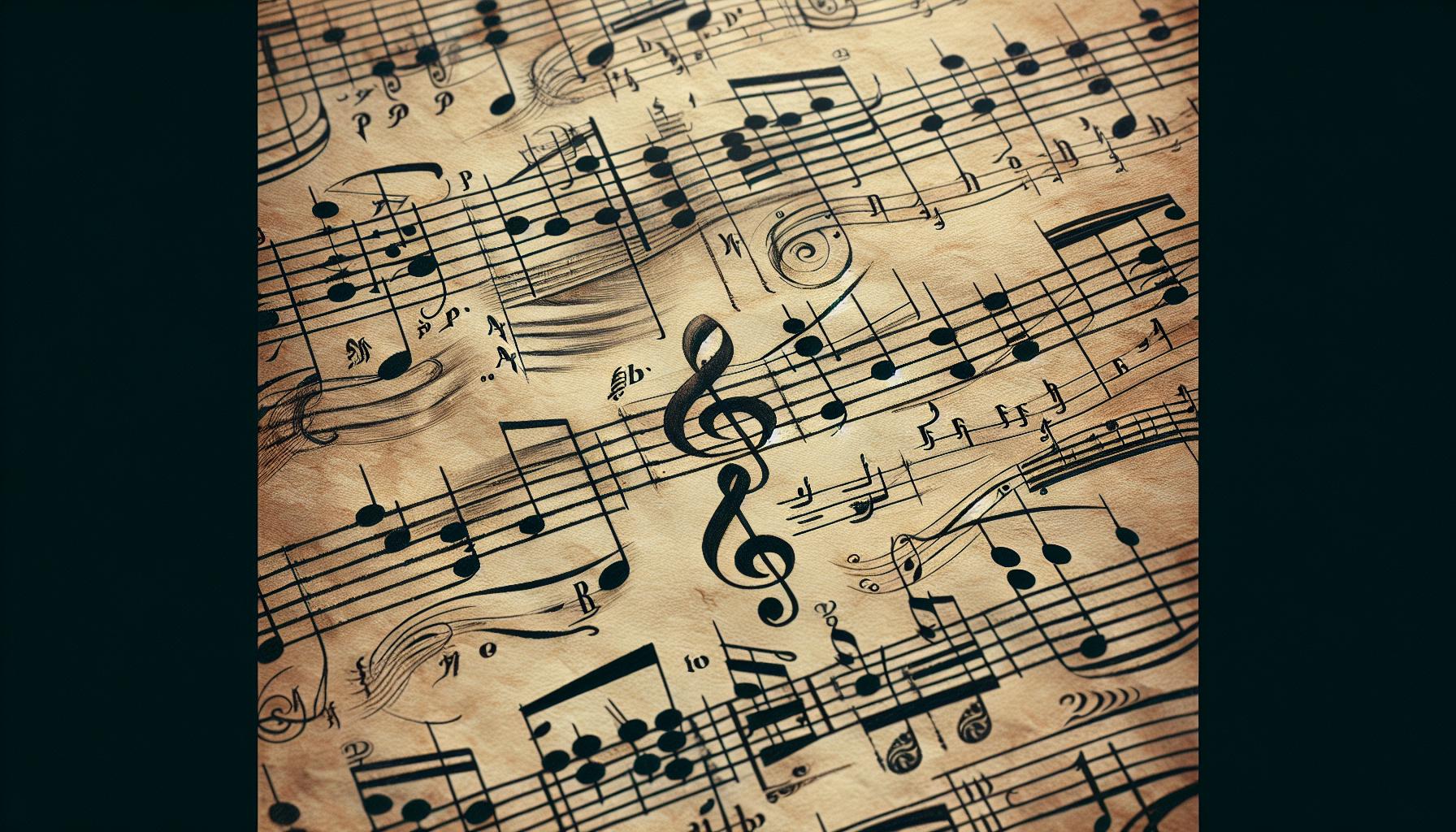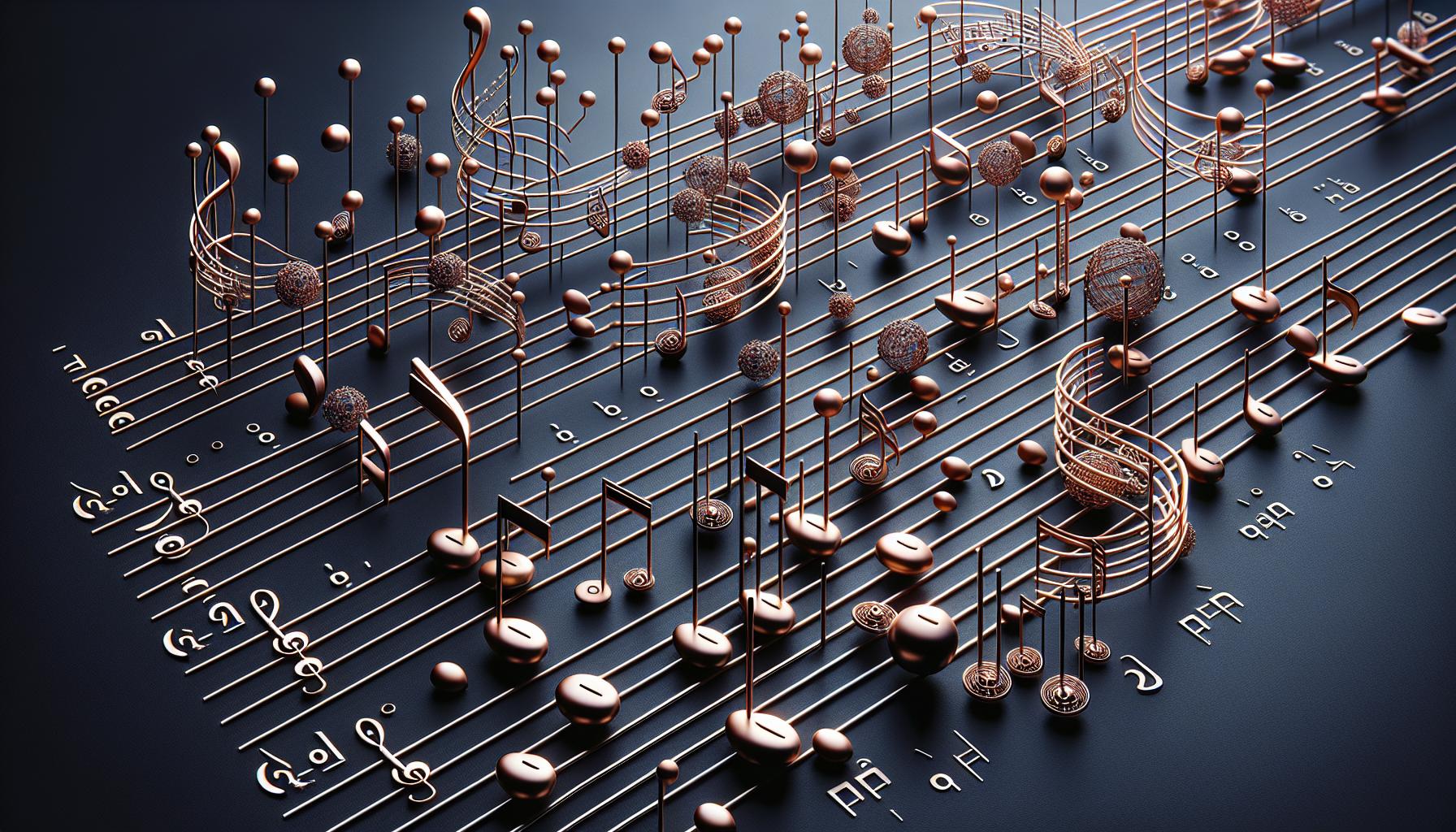If you’re like me, you know that understanding music theory is key to mastering any instrument. It’s the backbone of music, giving us the language to communicate our musical ideas. But where do we start? Look no further. I’ve got a list of essential music theory books that’ll help you on your journey.
These books aren’t just for beginners. Even if you’re an experienced musician, there’s always more to learn. From the basics of reading sheet music to the complexities of chord progressions, these books cover it all. So whether you’re a seasoned pro or just starting out, you’ll find something to level up your music theory knowledge.
Ready to dive in? Let’s explore these must-have music theory books that’ll change the way you understand and create music. Whether you’re a pianist, guitarist, or simply a music enthusiast, these books are for you.
Contents
Beginners Guide to Music Theory
When starting out on your journey to understand music theory, it’s crucial to choose the right guidebook. It’s not about picking the thickest book, but about selecting one that introduces concepts in a comprehensive and friendly way.
On my list of essential music theory books, I’ve got a few standout options perfect for beginners. They lay a solid foundation, enabling you to grasp fundamental concepts before diving into more complex topics.
“Tonal Harmony” by Stefan Kostka and Dorothy Payne is a great place to start. The book takes an in-depth yet straightforward approach to explaining music theory. It ensures that you get a firm understanding of each topic before progressing to the next. This step-by-step style of teaching ensures that you don’t become overwhelmed, making it a fantastic resource for beginners.
For those more interested in modern music, “How to Read Music: Fundamentals of Music Notation Made Easy” by Roger Evans makes an excellent guide. It offers a fresh take on music theory focused on contemporary styles, including pop, rock, and jazz.
Another remarkable book to consider is “Basic Music Theory: How to Read, Write, and Understand Written Music” by Jonathan Harnum. This book simplifies music theory and makes it accessible for anyone to learn – quite an achievement!
Here are my top three picks for music theory books for beginners:
| Book Title | Author |
|---|---|
| Tonal Harmony | Stefan Kostka and Dorothy Payne |
| How to Read Music: Fundamentals of Music Notation Made Easy | Roger Evans |
| Basic Music Theory: How to Read, Write, and Understand Written Music | Jonathan Harnum |
The Elements of Music: An Overview

Diving right into the heart of music theory, there’s an interesting journey of elements that breathe life into every composition. These elements are like pieces of a puzzle, carefully arranged to produce the magic we know as music.
Pitch, rhythm, dynamics, and timbre form the core elements of music. Pitch refers to the perceived frequency of sound. Different pitches create different musical notes. For instance, when you play ‘Do-Re-Mi’ on a piano, you’re playing notes of different pitches.
Next up, Rhythm – it’s the pattern of sounds and silences in music. It’s what makes you tap your foot or sway to the music. It’s about timing, beat and the pace of the music.
Dynamics speak about the volume, the loudness or softness of music. A piece may start quietly, crescendo into a loud passage and then decrescendo back to soft. It’s these dynamics that add emotion and expressiveness to the music.
Lastly, the timbre (pronounced ‘tam-ber’) reveals the color or unique quality of a sound that allows us to differentiate between different instruments or voices even when they’re playing or singing the same note. Imagine hearing a C note on a piano, then on a violin and then by a singer. It’s the same note, but it sounds different – that’s timbre.
Here’s a quick summary in table form:
| Element | Definition |
|---|---|
| Pitch | Perceived frequency of a sound, creating different musical notes. |
| Rhythm | Pattern of sounds and silences in music determining the timing and beat. |
| Dynamics | Volume of the music, from soft to loud, adding emotion and expressiveness. |
| Timbre | Unique color or quality of a sound, distinguishing between different sources of sound. |
Grasping these elements will push you one step ahead in understanding music theory. The recommended books about music theory will guide you on this journey, explaining these concepts in an accessible and engaging way. Don’t rush – take your time to understand, it’s not rocket science, it’s music. And remember, every musical journey begins with a single note.
Understanding Musical Notation and Sheet Music

Let’s now take a deep dive into musical notation and the world of sheet music. When we talk about notation, we’re referring to the signs and symbols used to represent music in written form. It’s essentially a language that musicians use to communicate and interpret the intricacies of a piece of music. For anyone eager to understand music theory, being proficient in reading and interpreting musical notation is imperative.
Much like how words form sentences, notes form a melody or rhythm in music. But apart from notes, there are different markings on sheet music that convey specific instructions to the musician. These include various components such as pitch, duration, timing, tempo and dynamics.
Written music uses a system of staves, clefs, and other symbols to represent pitches, rhythms, and other elements of a song.
- Staves are the sets of five horizontal lines where music is written.
- Clefs are symbols placed at the beginning of each staff to indicate the pitch of the notes written on it. They are primarily of two types – treble clef and bass clef.
- In addition, symbols like sharps, flats and naturals alter the pitch of the notes.
To give you some historical perspective, musical notation has evolved significantly over centuries, from neumatic notation in medieval times to modern-day staff notation. This progression has brought along greater accuracy and detail in representing music.
Learning to read sheet music might seem daunting at first, but with the right guidance and persistence, it becomes an invaluable skill for any musician. Many books that I’ve recommended in this article offer a thorough insight into reading and understanding musical notation along with practical exercises.
Sheet music opens up a whole new world to explore and understand, aiding in your journey to master music theory. Now that we’ve got a grip on notation, let’s move on and delve into the significance of scales and chords in music theory.
Key Signatures and Scales: Unlocking the Musical Language

Having touched upon musical notation, let’s delve into key signatures and scales, another indispensable component of music theory.
A key signature defines the key of a piece of music, denoting which notes are sharp or flat. It plays a crucial role in deciphering the mood of a piece as well as its harmonic structure. By developing proficiency in reading key signatures, we unearth the language of music, enabling a more profound connection with every piece we encounter.
Scales lay the groundwork for the melody and harmony in a piece of music. They consist of a sequence of notes in ascending or descending order of pitch, usually starting and ending on the same note. There’re many types of scales, including major, minor, chromatic, and pentatonic, each carrying a unique emotional coloration and tonal flavor.
Here are some data pertaining to key signatures and scales:
| Fact | Details |
|---|---|
| Importance of key signatures | Determines the key of a piece; Presents which notes are sharp or flat |
| Importance of scales | Provides a blueprint for melody and harmony; Varies in emotional coloration and tonal flavor |
Navigating through key signatures and scales isn’t just about recognizing symbols on sheet music. It’s a journey into understanding the audio landscape, the narrative of songs, and the musical language composers use to express their creative thoughts.
Exploring Chords and Harmony
After getting a firm grasp on key signatures and scales, we tread onto the terrain of chords and harmony, an imperative part of music theory. Chords, in essence, are a group of three or more notes played together, forming the backbone of most music pieces. I’ll assert here that understanding chords aids significantly in analyzing and creating music.
In terms of Harmony, it refers to how individual sounds blend together. In music, it’s the process by which individual sounds are ‘stacked’ into chords and chord progressions. Harmony plays a pivotal role in enhancing the melody, evoking emotions, and creating a narrative throughout a composition. Mastering harmony in music theory involves training your ear – truly listening and understanding the ‘spread of sounds’.
Chord Structure
There are several types of chords, each with its own characteristic sound. A ‘Major Chord’ consists of a root note, major third, and perfect fifth – known for their bright and happy sound. Contrastingly, the ‘Minor Chord’ – a root, minor third, and perfect fifth – delivers a melancholic sound. Among other types are Diminished Chords, Augmented Chords, and Seventh Chords, each with their unique properties.
In this segment, we’ll be diving deeper into these and other chord structures and dissecting the impact they have on a musical piece.
Harmony at Play
Ever wonder why some songs are etched in your memory, or why certain tunes tug at your heartstrings? Harmony has much to do with that! It employs chords and chord sequences to define the emotional tone of music.
Harmony, partnered with melody, binds together the musical elements creating a cohesive auditory experience. At its core it’s the art of progression, the science of progression, the psychology of progression – a complex yet profoundly affecting element of music.
In our march towards mastering music theory unlocking harmony and chord structures certainly, pave the way for understanding and creating impactful music.
Advanced Music Theory Concepts and Techniques
Now that we’ve covered the essentials of music theory, it’s time to dive deeper into the rich world of advanced music concepts and techniques. These advanced techniques aren’t just for complex classical compositions; in fact, you’ll often find them in popular and contemporary music.
Modal Interchange, sometimes called borrowed chords, is a technique where a chord from a parallel key is used in the piece, adding color and complexity. This technique is found everywhere, from Beethoven’s symphonies to the Beatles’ pop hits.
Negative Harmony, a concept that’s captivated the internet recently, is another intriguing technique. It’s this idea of ‘mirror’ or ‘flipped’ harmony, representing the polarity in music. Musicians like Jacob Collier have brought this ancient theory back in the spotlight, opening a floodgate of creative possibilities.
Exploring the vast universe of Counterpoint can be both challenging and rewarding. It’s a centuries-old technique where multiple independent melodies are played together to create a harmonious piece. This is intricate and detailed work, but the resultant musical output is profoundly compelling.
Complex Rhythmic Techniques like polyrhythms and cross-rhythms add a layer of power and unpredictability to a music piece. Think of polyrhythm as multiple rhythms playing simultaneously whereas cross-rhythm is the juxtaposition of contrasting beats. Many modern jazz and progressive rock songs owe their uniqueness to these rhythmic wonders.
Finally, the use of Extended and Altered Chords introduces fresh textures and depth into compositions. We’re venturing beyond the standard major and minor chords, into the realm of 9ths, 11ths, and 13ths. These extended and altered chords give music a sophisticated and modern feel.
By delving into these advanced music theory concepts and techniques, you’re opening yourself to an exhilarating world of musical innovation. It’s a fascinating journey, revealing the genius of master composers and deepening your appreciation of their musical masterpieces. Dive in, experiment with these advanced theories and techniques, and let your creative instincts take flight.
Putting Theory into Practice: Analyzing and Composing Music

Venturing deeper into the music theory realm, it’s time to blend theory with practice. This journey is not just about deciphering what the masters did but also finding your creative voice. Now that we’ve explored advanced concepts such as modal interchange, negative harmony, counterpoint, complex rhythmic techniques, and extended and altered chords, let’s understand how to put these notions into songwriting and composition.
Fade out the stereotype that music theory alternates creativity. On the contrary, it’s an arsenal of tools ready to be implemented and interpreted in your unique way. Master composers didn’t restrict themselves to basic theory. They ventured beyond, introducing bold innovations in melody, rhythm, harmony, and form. Now, as you take your steps towards analyzing and composing music, you’ll notice how theory unveils the magic behind the music.
For aspiring composers, in-depth comprehension of musical form is crucial. Whether it’s the simple AB form, the intricate sonata form, or the narrative programmatic form, these models offer various ways to structure musical ideas. Moreover, understanding harmony and counterpoint adds a profound dimension to your music, rendering your compositions more complex and expressive.
Meanwhile, for those drawn towards tempo and rhythm, delve into the uncharted waters of polyrhythm, mixed meter and syncopation. Draw inspiration from genres as diverse as jazz, contemporary classical, and world music. Boasting complex rhythmic techniques, these genres can invigorate your compositions with unpredictability and vitality.
Analyzing songs and compositions also plays a significant role in implementation. It’s a practice that highlights how others use theory to produce captivating music. Pouring over scores or dissecting a favorite song can reveal the creative choices that contribute to a piece’s power and charm. And there’s no limitation – analyze classical symphonies, jazz standards, or today’s top hits. Each will lend unique insights.
Remember, the journey to musical mastery is a marathon, not a sprint. Keep the momentum, always be curious, and don’t stop exploring. Let these advanced music theory concepts open new creative avenues for you. Continue savoring the process, and one day, you might be creating masterpieces that resonate across eras.
Conclusion
So there you have it. Music theory isn’t a cage, but a key that unlocks your musical potential. It’s about gaining the tools to interpret and apply in your unique style. From understanding form, harmony, and counterpoint, to exploring complex rhythms, it’s all crucial. Don’t forget the value of analyzing other’s work too. It’s a goldmine for gaining insights into creative choices. Remember, the journey to musical mastery is about continuous learning and exploration. So pick up a book, dive into the rich world of music theory, and let your creativity soar.
